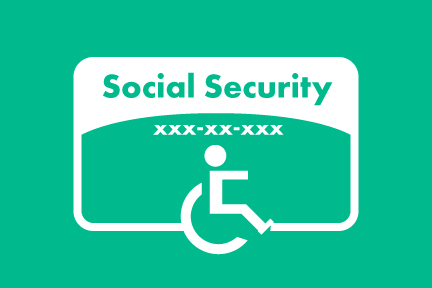Social Security Disability: SSDI vs. SSI

To qualify for either SSDI or SSI, you must be considered totally disabled. You cannot receive benefits from either program if you have only a partial or short-term disability.
Under the Social Security rules, you are considered disabled if you cannot do the work you did before, you cannot adjust to other work because of your medical conditions, your condition has lasted or is expected to last for at least one year, or if your condition is expected to result in death. However, disability is only one requirement; each program has other requirements.
SSDI
To qualify for SSDI, you must also prove that you have worked and contributed to the Social Security system for a certain period of time before you claim disability. The calculation of the monthly payment you will receive through SSDI is based on your earnings history and the “work credits” you have accumulated. You can accumulate up to four work credits per year based on your earnings. Monthly SSI benefits are paid if you are unable to work for a year or more and will continue until you are able to work again on a regular basis, but they may change over time since your monthly benefit is based in part on the number of credits you have accumulated over the last 10 years.
SSI
The SSI benefit is based on need. To qualify for SSI, in addition to proving that you are disabled, blind, or aged 65 or older, you must also show that you “have low income and few resources.” Unlike with SSDI, your prior work history is not considered in calculating SSI.
For the purposes of SSI, income includes all money you earn from work or receive from other sources, including Social Security benefits, workers compensation, unemployment benefits, veterans benefits, and money received from friends and relatives, as well as the value of any free food and shelter you receive. Resources include assets you own, including cash, bank accounts, stocks and bonds, land, vehicles, personal property and life insurance, and anything else that you own that could be converted to cash and used for food and shelter.
To be eligible, your resources must add up to less than $2,000 for an individual or $3,000 for a couple. However, some resources are not counted in this calculation, including the home you live in and the land it is on, one vehicle that you or someone in your household uses for transportation, and some personal effects, among other exclusions.
The Approval Process
In order to obtain disability benefits, you must complete an application and provide medical proof of your disability. But the majority of applications are not approved at the initial stage of the process. If that application is denied, you must appeal the initial decision. The appeals process has several steps.
First, you can file an appeal which initially acts as a request for reconsideration, in which your application is sent for a second review to determine if you are eligible. If your request for consideration is denied, you can then file a request for a hearing with the Social Security Administration. The hearing will be conducted before an administrative law judge who will review your case and can either approve or deny your claim or send it back for review. If you disagree with the decision of the administrative law judge, you may appeal with the Appeals Council. Finally, if your application is still not approved, you may file an appeal with a Federal District Court.
Hire a Qualified Disability Attorney
You can increase your chances of being approved with your initial application if you hire a qualified disability benefits attorney before filing your application. And a qualified attorney may be able to get you more in backpay by negotiating your disability onset date with the Social Security Administration. Use our site to find a disability benefits attorney to help you with your claim.
Additional Social Security Resources
Do You Need An Attorney?
If so, post a short summary of your legal needs to our site and let attorneys submit applications to fulfill those needs. No time wasted, no hassle, no confusion, no cost.

